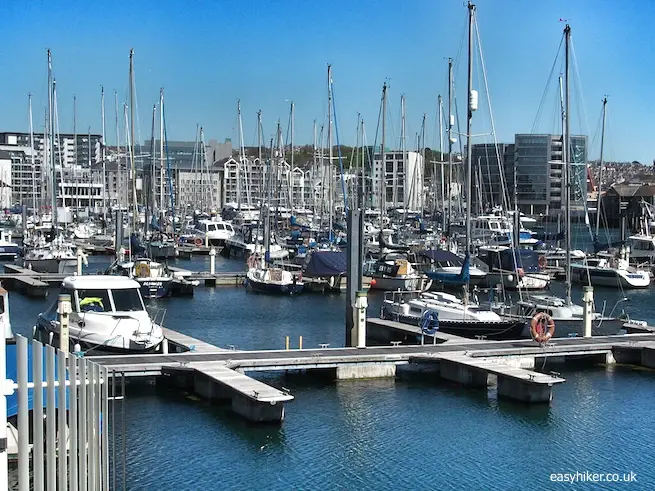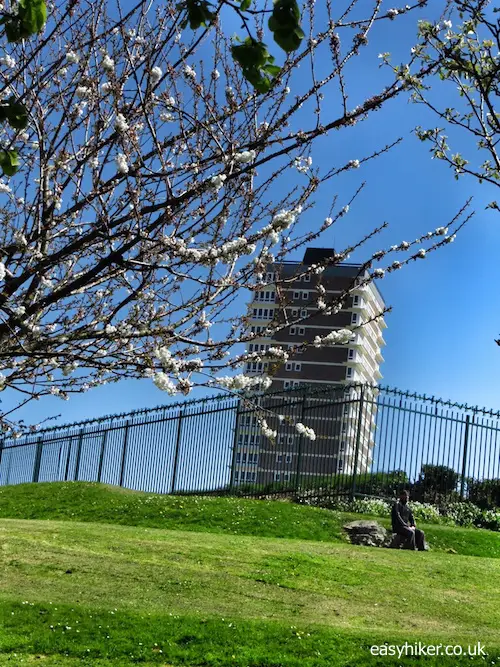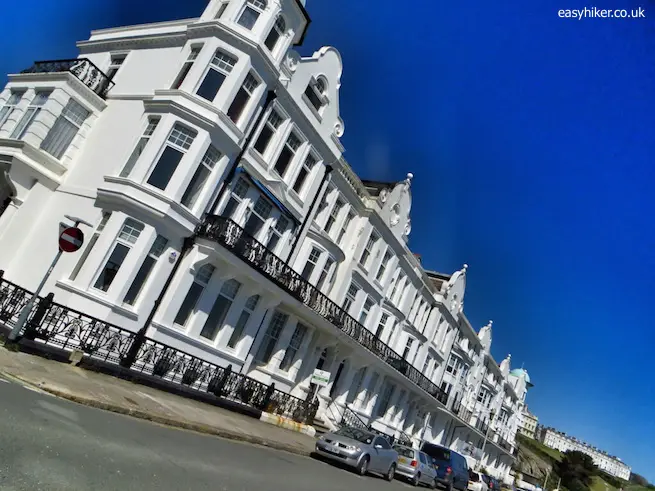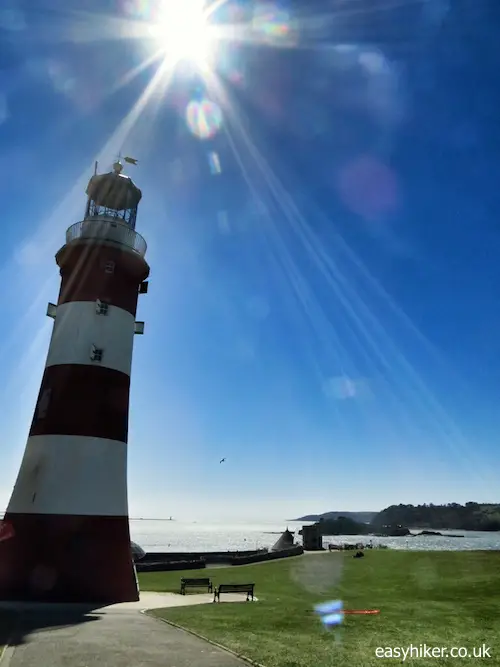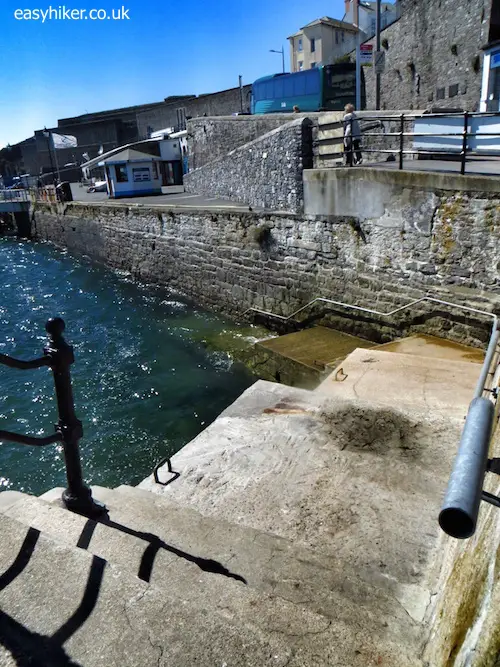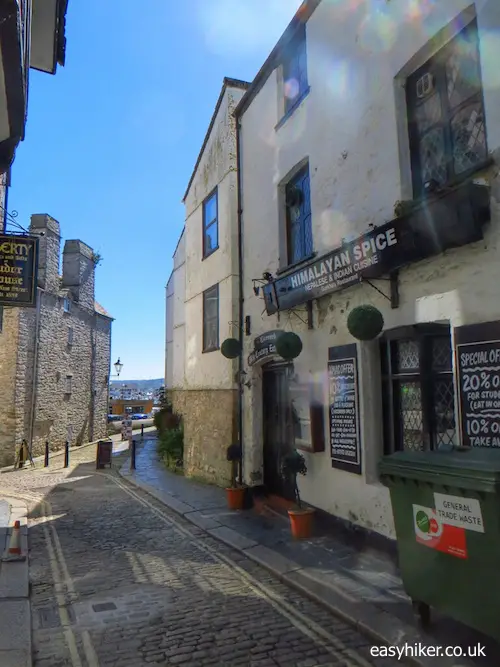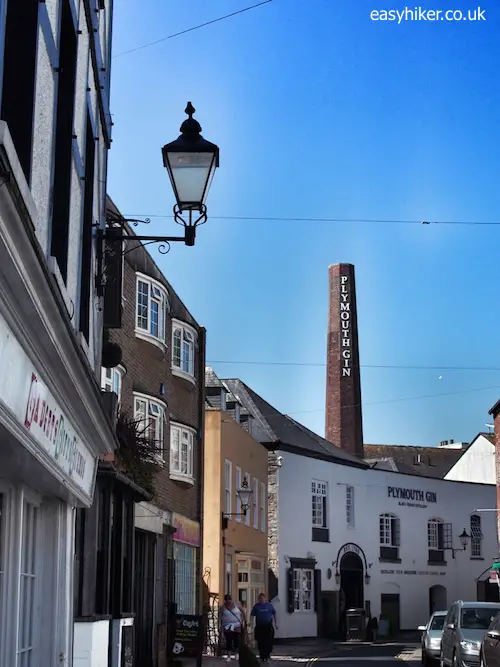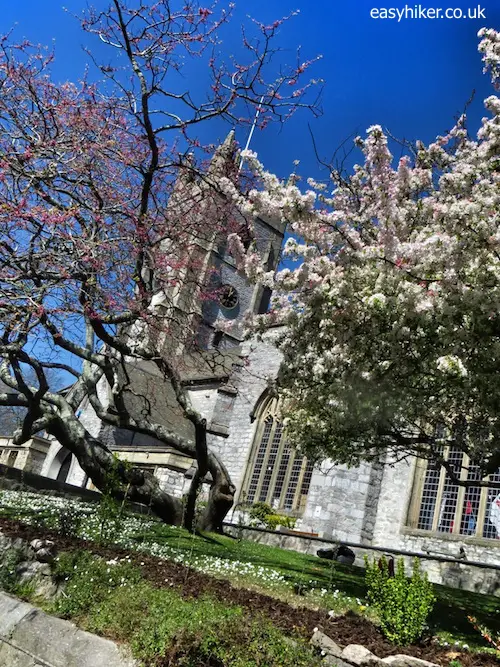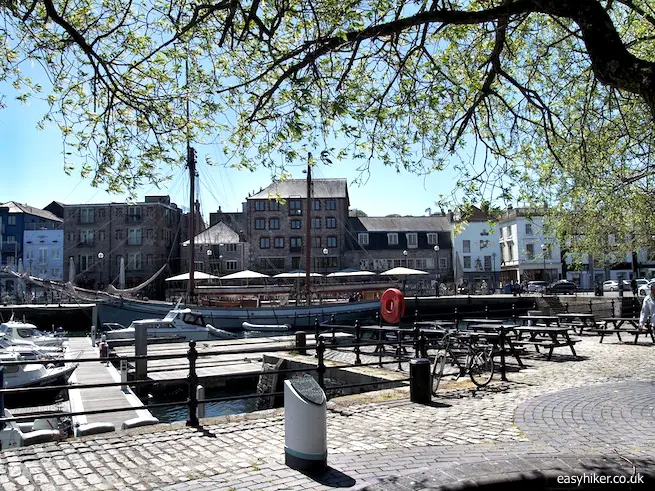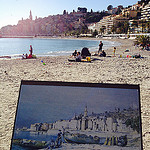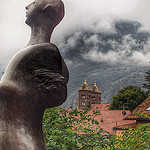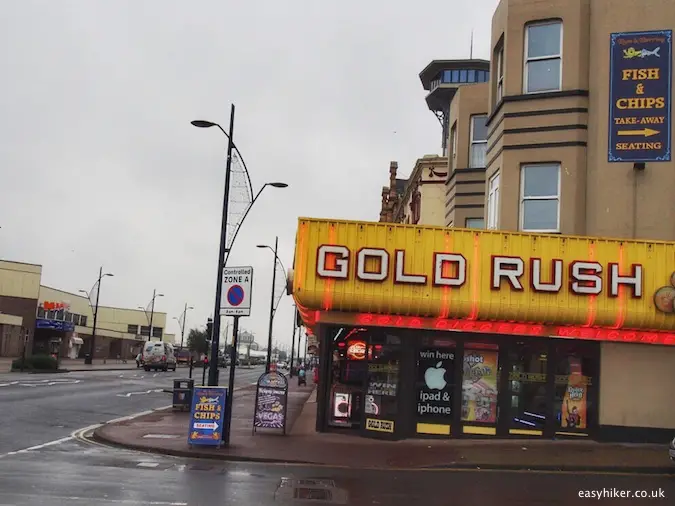Today, we shall make one last visit to the South West Coast Path, albeit one with a difference.
On this stretch of the trail, you will (probably) meet more people than on all of the other stages together and (certainly) see more concrete, too, but what this part of the path may lack in scenic beauty – although there is some – it more than makes up in historic significance.
You may remember that I told you before how closely the South West Coast Path hugs the coastline, practically never veering off by more than a few yards.
We will now see, with the Plymouth Waterfront Walkway, it even does so where this recipe fails to produce an experience of “unspoilt seaside nature”: on its way through Plymouth, the cultural, economic and industrial capital of the English Southwest.
About 9 miles (14 km) of the South West Coast Path lead through Plymouth. On top of that, you can add another ten miles or so in the east (beyond Jennycliff), an area that is still easily accessible through Plymouth’s public transport system but essentially as rugged as the more outlying stages of the trail. Plymouth is overall not a bad base for getting a taste of the South West Coast Path.
Today, however, we will concentrate on the heartpiece of the urban walk, leaving aside the ferry harbour in the west and the town’s semi-rural outskirts in the east and focusing on the area between downtown Millbay and the historic Sutton Harbour.
The Plymouth Waterfront Walkway
We start the Plymouth Waterfront walk at the Millbay Road roundabout, near the Ferry Port Entrance, and continue down Millbay Road, turning right into West Hoe Road past Millbay Park.
Throughout its history, Plymouth has been a major seaport, more of military than of commercial importance, and it was one of the key targets of the German Luftwaffe during WWII. More old buildings were destroyed during Plymouth’s reconstruction in the 1950s and 60s, so much of what you see in today’s inner city is actually rather new. Still, on a glorious spring day, even those buildings manage to look almost charming.
Continue into Radford Road and turn left into Grand Parade with its magnificent Victorian terrace …
… just be ready to be met by a stiff breeze: it can get a little blustery out here – not blustery enough, perhaps, to blow you all the way to the World of Oz, but once the Plymouth wind gets really blowing, it can crack more than cheeks.
Just look what happened to Mrs. Easy Hiker’s ice cream cone.
The sea on your right hand side is called the Plymouth Sound. It was here, on a ship docked just off the Grand Parade, where Francis Drake and Lord Howard played their legendary game of bowls while waiting for the tide that would take them out to meet the Spanish Armada in 1588, perhaps to this very day England’s greatest naval victory.
Approaching on your left hand side, you can now see Hoe Park with the Smeaton Tower lighthouse, the city’s most famous landmark.
This 18th century lighthouse had originally been built a mile or so further to the west, but when they found out in 1877 that the sea had undermined its rock base, it was transported – stone by stone – to its present location.
The fortress to the east of Hoe Park – more of a walled city than a single building – is the Royal Citadel, built in 1666 to defend the coast against naval attacks. Since then, it has been almost continuously extended and is still in use by the British naval forces, so you cannot just enter and snoop around. (They do, however, lay on some guided tours during the summer months.)
Behind the Citadel, turn right into the Barbican and Sutton Harbour, Plymouth’s Old Town. Underneath the footbridge to your right, you can spot what is the city’s most famous historical landmark: the Mayflower Steps, …
… from where – in 1620 – the Pilgrim Fathers set sail for the New World, paving the way for millions of European settlers that would eventually follow. A moment in world history every bit as significant as the discovery of America itself. The 400th anniversary of this event will be duly celebrated by the city in 2020.
Now walk once around the Sutton Harbour Marina, but do not forget to explore the many quaint side streets on your left.
Today, this is an area of bars, restaurants and souvenir shops, but for hundreds of years, visitors were well advised to stay clear of these narrow streets.
Things were particularly bad in the early 19th century when the Royal Navy needed more men than the country would willingly provide, and so-called “press gangs” roamed Plymouth Harbour in search of fresh cannon fodder, scouring gin shops and commercial vessels, even the galleries of theatres.
Eventually, these gangs in their despair resorted to “shanghaiing” whole groups of people straight off the street. Oh, for the good old days!
Speaking about gin shops: the Plymouth Gin Distillery has been providing generations of seafarers with their favourite tipple from these premises since 1793.
One of the few buildings in the area that are even older than that is the Minster Church of St Andrew …
… that dates back to the 15th century. It also marks the transition from Old Town to Plymouth’s (rather uncharming) New Town, so when you have reached Minster Church, it’s probably best to turn around and walk back to the harbour.
This is also where this walk ends, which represents only the central section of the full stage on the South West Coast Path.


